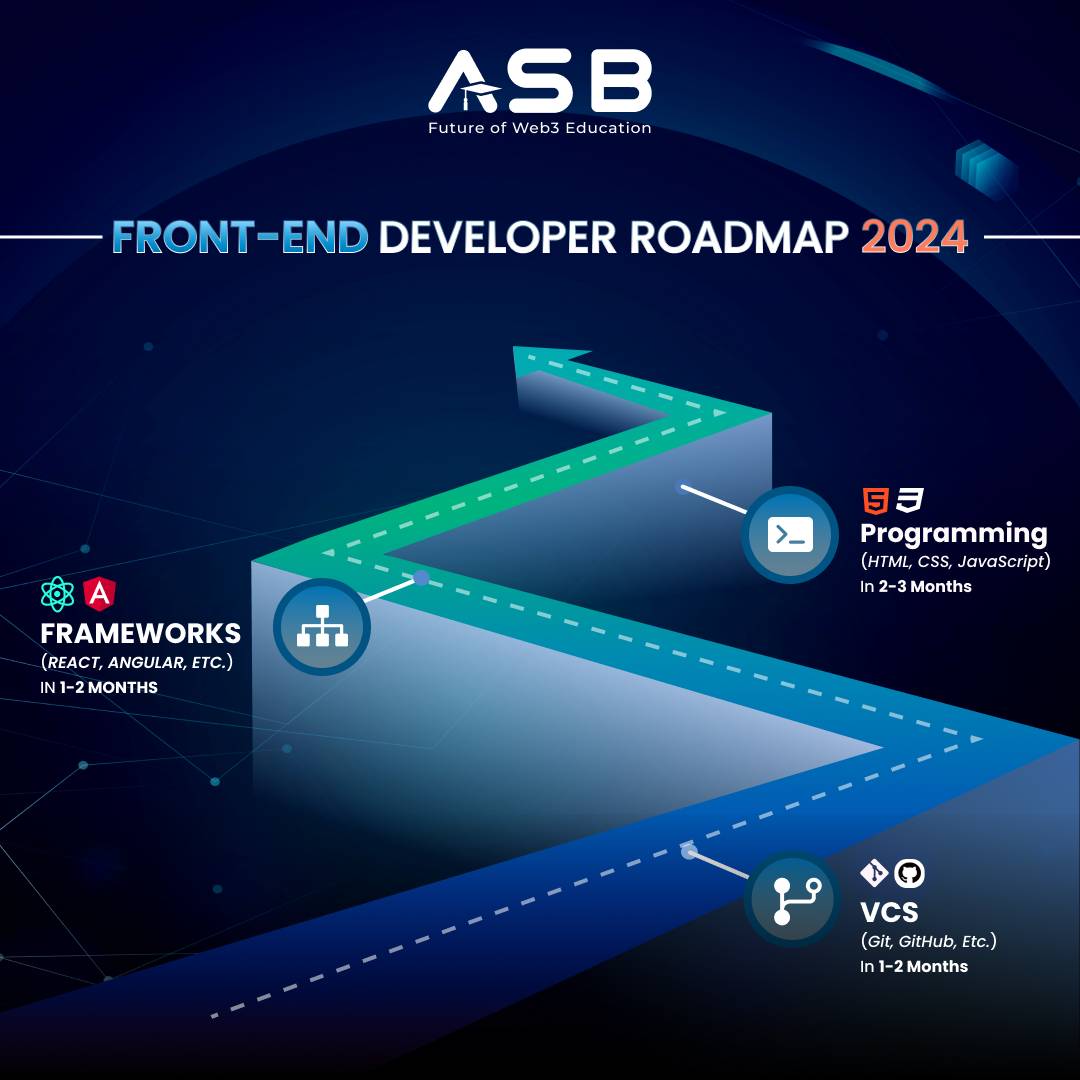With the growing focus on user interfaces and the demand for user-friendly websites and apps, there is an increasing need for front-end developers. If you seek to turn your creative ideas into engaging online experiences, front-end development is the right area for you! To become a front-end development professional, you must follow a thorough and well-defined roadmap for front-end web developer career path.
Here, we’ll go through the key technologies and prerequisite information, to help you enter the domain of front-end development.
What is Front-end Development?
The front-end of a website or application is the client-facing side. In other words, the front-end developers build the user interface (UI), that determines how a website looks and works on the surface. It also decides how users interact with the website and its visual elements include media, animations, forms, buttons, etc.
Considering the importance of front-end development, it is not surprising that organizations often lose money and users because of poor UX.
Latest surveys show that conversion rates can rise by 200% with an effective UI, and by 400% with a good UX.
Apart from creating the user interface, front-end developers need to strike a balance between speed and scalability, functionality and design, and similar parameters. They also make sure that the stated requirements are met, and the websites/ apps load well across various types of platforms and browsers (mobile, tablet, computer, etc.).
Timeline to Grasp the Key Technologies

Once you have decided to step into the field of front-end development, your first thought would be “How much time will it take for me to become a front-end developer?” Well, this generally depends upon your prior education and the level of effort you put in. Organizations usually prefer candidates with technical backgrounds to opt for front-end development profiles.
So, considering you have an educational degree in a technology-based stream, it won’t take you more than 6 months to one year to become a professional front-end developer. Given below is a complete front-end development roadmap you can utilize to dedicate time to each of the related technologies and tools.
Learn Programming in the first 2-3 Months
To begin with, you need to master programming languages like HTML, CSS, and JavaScript. These form the cornerstones of front-end development. HTML is used for structuring web pages, whereas CSS helps in styling the web pages and integrating additional functionalities into them. Bootstrap and Tailwind are some of the commonly used CSS frameworks.
Once you learn to give the right appearance to websites and apps, the next step is to get your hands on JavaScript, which facilitates interactive and dynamic features. A report shows that, in 2022, 82% of the developers used JavaScript as a frontend framework.
Understand Main Frameworks in the Next 1-2 months
Developing websites frequently involves a repetitive set of tasks. To allow the reusability of code and boost development speed, certain frameworks are used. These consist of compilers, code libraries, and programs, which can help in developing complex websites and applications.
Angular, Vue, and React are commonly utilized front-end frameworks. These are basically JavaScript-based frameworks. You can dedicate 1-3 months to learning one such framework, especially React.
Get Versed in Version Control Systems (VCS) in 1-2 months
In the last phase of your front-end web developer training, you need to learn about version control systems. VCS is a platform that aids in application management, like updating, undoing, modifying, redoing, etc. It maintains a record of your program and keeps track of its versions. More than 70% of software development teams make use of Git, the most popular version control system.
To get complete training in front-end development, you can consider reputed institutes like Antier School of Blocktech (ASB). It offers a certified front-end developer course, that includes hands-on experience with an actual project.
Tips to Begin a Career in Front-end Development
Once you have gained expertise in the foundational technologies of front-end development, start planning your next course of action to establish a career in front-end development. The following tips will help you land a good job in the front-end development sector:
Contribute to Projects and Sharpen your Soft Skills: Put your knowledge to use by taking part in ongoing and new projects. Starting with building basic webpages, you can advance to more sophisticated apps. This will also enhance your portfolio, displaying your competence and enthusiasm to learn by practice.
At the same time, you will be able to polish your communication skills, problem-solving ability, and time management capability. Through projects, you have to collaborate with designers, stakeholders, and other members of the development team.
Widen your Network and Stay Updated: You can build a great network by being a part of developer communities, going to meetups, working on open-source projects with other developers, etc. Such opportunities will make you connect with industry leaders, have career leads, internships, and more.
Technology and trends keep changing and evolving in the front-end development industry. So, it is crucial that you stay abreast of the recent integrations and related news by engaging in online forums, webinars, and industry events.
Finally, you can exhibit your work and mark your professional online presence on websites and social media channels such as GitHub, LinkedIn, etc. Accordingly, be prepared to appear for suitable interviews and the associated screening process for appropriate job positions.
Career Opportunities In Front-end Development
There is a great range of job options available in the field of front-end development. Here’s a brief on the common in-demand profiles for front-end developers:
Front-end Developer: This is a standard entry-level position in front-end development. Front-end developers look after the user interface and aesthetics of a website or web application and convert the designs made by graphic designer into usable code.
UI Developer: These developers monitor the usability of the website/ app’s design. They collaborate closely with UX designers to produce interfaces that are simple to use and navigate.
UX Developer: These professionals pay attention to overall working of the front-end of the website or web application. UX developers construct prototypes, conduct user research, and create user flows, ensuring that the users can engage with the product effectively and have a great experience.
Front-end Engineer: These experts work on challenging projects and possess advanced knowledge of front-end development. They are in charge of creating reusable parts of the code, interfacing with back-end programs, and augmenting the functionality of websites.
Web Designer/ Developer: This position is a blend of front-end development and web design expertise. Alongside harnessing their technical know-how to convert designs into code, web designers and developers take care of the aesthetic appeal and feel of a website.
Front-end Architect: These are senior developers, responsible for the overall management and guidance of a front-end development project. They lay down criteria for best practices and coding standards, and assure that the front-end codebase is scalable and maintainable.
Takeaway
The field of front-end development is dynamic and always expanding. With a precise roadmap for front-end web developer career path, you are bound to progress and make a mark in the field. Consistent practice, active participation, and ongoing education are essential to stay relevant in front-end development. So, you need to try out new tools, and constantly aim for improvement, in a quest to build fascinating websites and enable excellent user experience.
